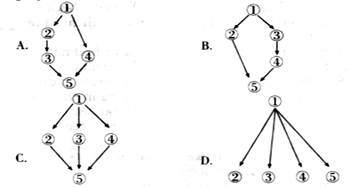题目内容
.
-- Better get down to your work, Jack.
--- _____________.
A. It’s my pleasure B. Not to mention it
C. Mind your own business D. You’re welcome
C

 孟建平名校考卷系列答案
孟建平名校考卷系列答案
Our daughter Kerrin, a student at Boston University, had been home for a week-end visit, and I dropped her off at the bus station just in time for her back to college. After Kerrin’s bus had gone and I was driving away, I noticed that she had left her purse on the passenger seat. Worried that she would arrive in Boston without money or keys to her room, I called my wife, Bette Jean, on the car phone, explaining why I would be late. As I was following the bus, Bette Jean phoned me back to say she had phoned the bus dispatcher(调度员)on the other line and he, in return, had phoned the bus driver on yet another phone. The driver asked me to wave out of my window to show where I was. Then he pulled over at a rest stop, and I did the same. Kerrin jumped off the bus, and I handed her the purse and went on my way.
【小题1】The writer saw his daughter’s purse right after .
| A.seeing her off at the bus station |
| B.starting his car again |
| C.she got off the car |
| D.she got on the bus |
| A.the bus started off |
| B.her mother told her |
| C.the bus stopped again |
| D.she returned to the university |
| A.driver—writer—Better Jean—Kerrin |
| B.Kerrin—writer—Better Jean—driver |
| C.writer—driver—Kerrin—Better Jean |
| D.writer—Bette—Jean—driver—Kerrin |
| A.The bus was too fast for the car to catch up with in no time. |
| B.The writer had tried to phone the dispatcher but failed. |
| C.The writer couldn’t get in touch with the driver by the phone. |
| D.Both the writer and the bus driver could use the car phone. |
a. his car b. phone c. the bus driver
d. the dispatcher e. his wife f. his daughter
| A.a, b, d and e | B.c, d, e and f |
| C.a, b, c and d | D.b, c, d and e |
Did you ever wonder who invented products like Liquid Paper, Kevlar or paper bags? Most would think a man invented these items. Guess what? Women invented each of these. What? You don’t believe me? Well, read this:
Liquid Paper was invented by Bette Nesmith Graham in 1951 and originally called Mistake Out. Being a typist, Bette was increasingly irritated with being unable to erase her typing mistakes. The messy business left her hands black and the paper dirty. Bette was good at painting and remembered that an artist paints over mistakes. She applied that same principle to typing mistakes and Liquid Paper was born, making Bette into a self-made millionaire.
Kevlar, yes, the Kevlar of the bullet proof vest(防弹衣)—what police officers and soldiers wear, was invented by Stephanie Kwolek. Stephanie worked for the DuPont Company as a research chemist. She was asked to find a high-performance fiber. Originally, this fiber was intended to be used for car tires (轮胎). However, the fiber she developed in 1964 was amazing and is still used in products such as sailboats, skis, shoes, and yes, bullet proof vests. In 1995 Stephanie was named to the National Inventor’s Hall of Fame.
Margaret Knight invented a machine that revolutionized the making of paper bags. Paper bags had been made like envelopes but Margaret developed a machine that would fold and paste(粘)a flat-bottom paper bag, the very same type we still use today. Margaret’s family was poor and she started working at the age of nine. Her first invention at the age of twelve was a safety tool for a loom(织布机). Later she worked for the Columbia Paper Bag Company. It was there that she worked on improving the making of paper bags. She was issued her patent(专利)in 1870.
So next time you use a new product or an old one, will you wonder who made it? Do some research on the web and answer a few questions like: Who invented it? How was it invented? You may be surprised at some of the stories you uncover.
【小题1】The underlined word “irritated” in Paragraph 2 is the closest in meaning to_________.
| A.annoyed | B.excited | C.delighted | D.nervous |
| A.She was a member of the National Inventor’s Hall of Fame. |
| B.Her first invention was made when she was twenty. |
| C.Her invention was designed to produce envelopes. |
| D.She began working when she was very young. |

【小题4】What would be the best title for the passage?
| A.How inventions were made |
| B.Amazing inventions by women |
| C.Women and modern technology |
| D.You can also be an inventor |
